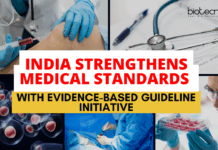Basing decisions about cancer treatment on mutations and other somatic genomic abnormalities has become a standard of care for patients with some tumors types, but the use of targeted therapies rarely leads to cure, and responses can be incomplete. If clinical decisions are to improve, both mutation data and cell context—the cellular and genomic milieu in which the mutations are found—must be considered.
“Cell context and mutation are the ‘evil twins’ of cancer,” said David G. Huntsman, MD, professor in the Departments of Pathology, Laboratory Medicine, and Obstetrics and Gynecology, University of British Columbia, in a presentation at the recent European Society for Medical Oncology (ESMO) annual meeting in Copenhagen. “Mutation and cell context are the two dominant factors that collude in the development of cancer and shape what a cancer is and how it potentially can be treated.”
“We’ve been focused a little too much on the mutation side of things the past few years because of the excitement around next-generation sequencing, but now we have to rebalance the discussion and consider the cell context as well,”
Dr Huntsman said, in his lecture titled “One Mutation, Many Cancers.”Understanding how cell context and mutation interplay from the point of tumor origin through development and progression will help predict why some cancers respond to treatment, whereas others have primary resistance to specific therapies, he said. “Once we know that, we’ll be able to improve the performance of a lot things we’re doing in the clinic.”
A good example is the ubiquitous BRAF gene and the prototypicalBRAF V600E mutation found in some cancers, Huntsman said, in an interview after the meeting.
“You can’t treat all tumors with the common BRAF mutation as being equivalent—targeting that mutation is highly effective in some tumor types and totally useless in others,” he said. “Melanomas with theBRAF V600E mutation respond well to treatment with vemurafenib, whereas colorectal carcinomas with the identical mutation do not.”
Another aspect of precision medicine that falls outside genomic analysis is signaling pathways that do not necessarily occur by mutations, said Carlos Becerra, MD, the medical director of the Innovative Clinical Trials Center at Baylor University Medical Center in Dallas.
“A cell has the possibility of increasing the pathway to a specific signal in the cell without a mutation, be it by amplification or even by an increase in the traffic of the signaling without amplification or mutation,” Dr Becerra said.
“For example, HER2-positive breast cancer patients are given Herceptin® (trastuzumab) to control the tumor, but some HER2-negative patients can respond to treatment with Herceptin even though there’s no mutation in the tumor, because it’s an increase in the whole pathway,” Dr Becerra said. “If our drug goes after only one signaling pathway or only after a mutation that occurs downstream, that’s not going to work.”
Activating mutations are of principal importance in such tumors as gastrointestinal stromal tumors and chronic myelogenous leukemia with Philadelphia chromosome, but Dr Becerra said these tumors are the exception and not the rule.
“In the majority of tumors, the number of mutations is much higher, and it’s not clear what we can target,” he said. “In pancreatic cancer, the average tumor has about 60 mutations, but it is estimated that six to eight different drugs are needed to control all of the signaling pathways to control the cancer,” he said. “When you give the patient just two or three of those drugs, there can already be too much toxicity.”
Dr Becerra said he thinks right now, genetic testing has reached its limit. “We have to wait for more information to come through in order to be able to better treat our patients.”
Mark A. Rubin, MD, a professor of Pathology and Laboratory Medicine and founding director of the Institute for Precision Medicine at Weill Cornell Medical College, agrees that there has been an overemphasis on the genomic component of precision medicine.
There has been an overemphasis on the genomic component of precision medicine. “Precision medicine is not just sequencing; it’s looking at a patient in the context of their environment, the type of clinical care they’re getting, their interaction with their environment, and then the genomic analyses,” Rubin said. “The emphasis has to be on a more holistic view of the individual in the context of precision medicine, looking at the tumor genomics, the patient’s clinical information, and their environment.”
Tumor cells are in a microenvironment of the patient, Dr Rubin said, and that will be reflected in how the patient responds. Immunotherapy is the best example of this, he said, in that tumor cells can affect the surrounding cells so that they don’t recognize the tumor cells.
“That’s something typical genomics is not capturing, and it’s something new tests need to focus on,” Dr Rubin said. “When performing genomic sequencing of the tumor, you should look in parallel at surrounding cells and evaluate the cells in the same types of assays, and only then ask which patients’ microenvironments are most likely to respond to a checkpoint inhibitor immunotherapy.”





























